Often, car collisions aren’t solely the fault of one driver. In many cases, while one person may have made a reckless or even illegal move, it can be shown that if the other driver had been more careful, they could have avoided the crash.
Say a driver runs through a stop sign and crashes into another driver. Clearly, the driver who ignored the stop sign is primarily to blame. However, maybe the driver who was hit was speeding and not looking both ways before entering the intersection (which you should always do, even if you have the right-of-way). That driver would likely be considered to have some fault. Exactly how much fault each driver is assigned will determine how much compensation they can receive (if any).
States follow various rules regarding negligence and compensation. Minnesota follows the “modified comparative negligence” model. Specifically, it uses the “51% rule.”
What that means if you’re in a crash in Minnesota
If one driver bears over half (at least 51%) of the responsibility for a crash, they’re prohibited from collecting any compensation to cover their expenses and other damages. The amount of fault (if any) of the other driver still matters, though.
That’s because, under a “comparative negligence” model, the person who has the lesser amount of fault’s compensation is reduced by their percentage of fault. In the example above, say the driver who was struck was determined to be 25% at fault. That’s the percentage any compensation they’re determined to be entitled to is reduced by that percentage.
Of course, things get a little more complicated if there are three or more drivers involved. However, it’s generally the same principle of comparative fault.
Just what happened in a crash and what amount of fault each driver had is typically determined by insurance companies – or in court, if it gets to that point. Police reports, surveillance videos, eyewitness accounts, photos and more can all be useful evidence. Having experienced legal guidance can help you get the maximum possible compensation.

